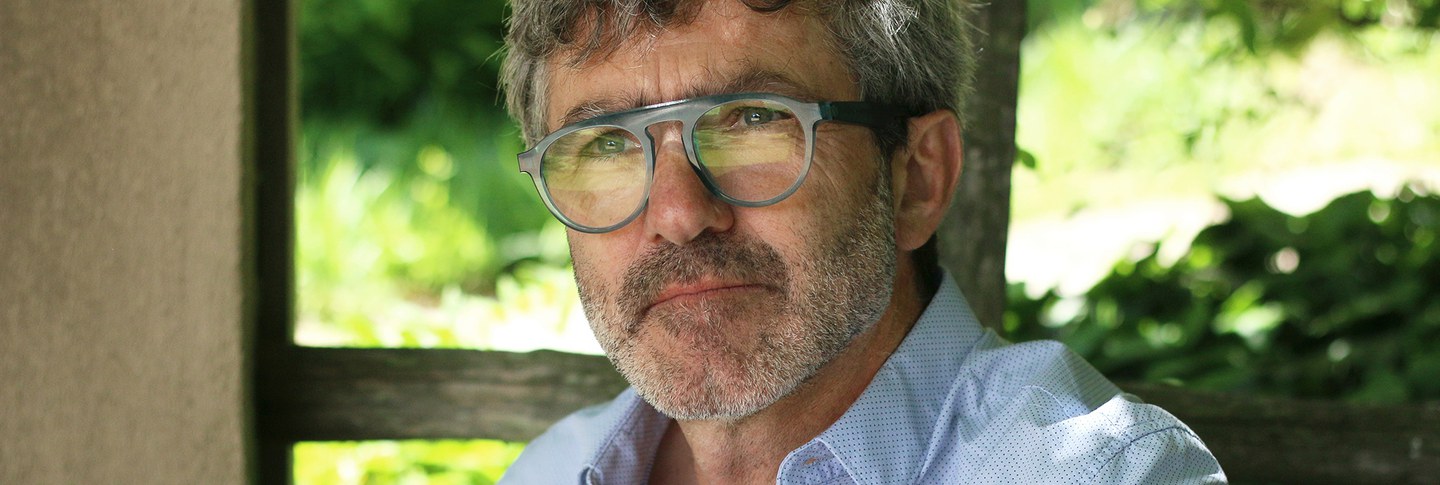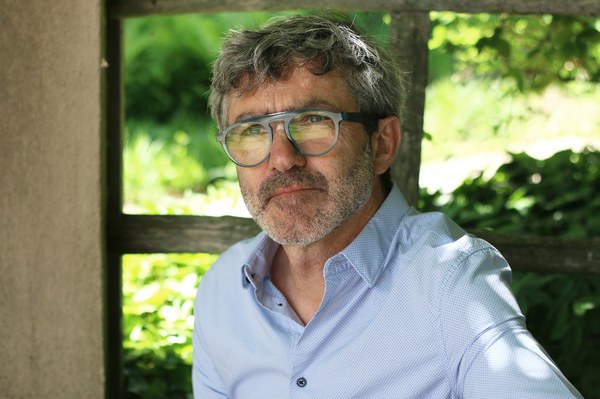Hartmut Troll, a landscape architect and honorary professor at Heidelberg University, is a fellow in Garden and Landscape Studies at Dumbarton Oaks in spring 2017. In his recent research report, “Nature as Model, Taste and Convenience as Measure: The Position of Friedrich Ludwig von Sckell within Garden Theory,” Troll described his work studying the garden pioneer, who is considered the founder of the classical English gardening tradition in Germany.
Brief Q&A with Hartmut Troll
In the late eighteenth century, Sckell visits France and England as part of his apprenticeship. What is the gardening milieu that he moves in?
So, this is all taking place around the time of the Enlightenment, which brings a large shift in the general attitude to nature. I tried to emphasize in my talk that even with the late French garden, the attitude to nature is different, evolving. Nature comes first; art follows on its heels.
In England, the new attitude, or taste, finds its expression in a new manner of gardening that has its model in painting. The first attempts in England to develop this style are what we would call today a transition style. It still has avenues, but less symmetry, and more free-flowing elements begin to creep in—there are some passes that wind like a serpentine, and eventually they stop cutting and trimming the trees, to gain another natural feature.
But it’s one thing to have a different attitude, to say, “My interest goes beyond the border of the former garden, it has started to bore me, there are beautiful images outside of the garden, I want to get closer to this idea.” It’s another thing entirely to create that idea, to bring it into physical existence. The first person who develops what we might call professional rules that determine how this new style should be laid out is William Kent, a professional painter who adapts the rules of painting to the act of gardening.
But Sckell goes to France first. Officially, he’s sent to learn the science of botany, how to cultivate the famous fruit trees of France. The physiocratic idea behind it is to return and make the country more beautiful, even more edible, to make it richer in terms of farming and food production. While there, he also gets in touch with the gardens of the genius Le Nôtre, and till the end of his life he never loses his appreciation. He loved the magnitude, the magnificence of these allées and avenues; to him, they are great, and when he begins to develop his own concept of landscape he adapts their monumental scale. But we have to recognize, at the time he’s interacting with Le Nôtre’s gardens, they’re almost one hundred years old. The trees have changed and grown, so have the plants—it’s a different appearance to the French classic period.
And afterward he went to England, and there’s a certain perspective that Sckell brings to his observations. He was ordered to be trained in the new manner of designing gardens in accord with the principle of nature. And of course, Sckell comes from a gardening family, and I think his interest in adapting new gardening knowledge derives from this tradition, this lineage. All in all, travel is incredibly important for a gardener. If you are not sponsored, you’ll often pay for your own travels—it creates a sort of professional pedigree, allows you to secure a better job, to become the chief court gardener, rather than simply a worker in the gardens.
Your research centers around the book that Sckell writes at the end of his life—how does this book relate to what he experiences in England?
Sckell is in England in the late eighteenth century, when new styles are developing freely. Lancelot Brown, the English garden landscape designer, is at the peak of his career. He was the first true professional, the one who got closest to the pattern of nature. William Chambers, his coeval, is in competition with him—so you have a swirl of theories, of competing viewpoints. Almost fifty years later, in the theoretical text that he writes at the end of his life, Sckell refers to this exact conflict; he quotes Chambers’s criticism of Lancelot Brown, and it runs for almost two pages. This, I should say, is an extraordinarily rare rhetorical move, because Sckell never quotes, except a little poetry here and there. Though he refers to almost thirty artists, painters, poets, architects, and garden designers, it’s always in a thematic way. Sckell designs the parameters of his art along Chambers’s criticism, and it’s a key point of his position that also illustrates the differences, and similarities, that his work shares with painting.
Part of my research involves analyzing Sckell’s writing and determining who is influencing him, and when. If you look at the text, you see that it’s exactly the discussion that’s occurring when Sckell stayed in England as a young gardener. But when he comes back to Germany, it seems that he doesn’t adapt his English-affected knowledge to his work with landscape gardening. He doesn’t interact with the ongoing English discussion; it doesn’t touch him at all. After he leaves England and the famous battle between Chambers and Brown, there takes place the even more famous struggle about the so-called picturesque garden place, but this is ignored by Sckell to some extent, even though these arguments are very important for the aesthetic and theoretical developments of the English garden.
And what this means is that his theoretical preferences were formed very early in his career, his aesthetic sense was forged at this relatively early stage in the English landscape debate. So he leaves England, and begins his career, and forty years later, when he sits down to write his theoretical book, the theory of art he espouses is very much tied to those formative years. There are many ways to prove this—for instance, he refers to William Hogarth and his ideas on beauty, which are still relevant in the later 1700s, when Sckell is in England, but have begun to seem outmoded by the time Sckell is writing his book. His theory seems to be affected by these early theoretical positions but is mainly based on, and develops from, his own long-term experiences as a landscape gardener. It is the high-grade personal position of an artist at the end of his life.

